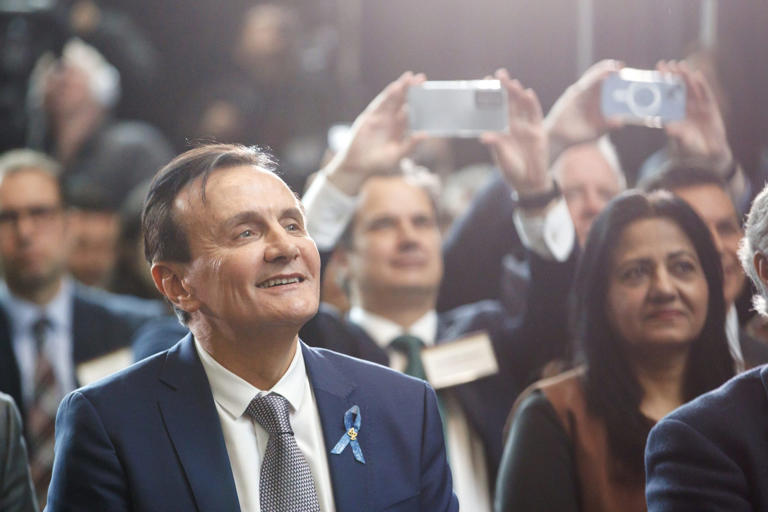The compensation of CEOs in the FTSE 100 has reached new heights, with median pay increasing by 2% to a record £4.2 million ($5.4 million) in 2023. This uptick in executive remuneration comes in the wake of economic recovery and growth following the COVID-19 pandemic. However, the rise in CEO pay has ignited an ongoing debate in the U.K. about whether such high compensation is justified when compared to the average worker’s earnings. Some argue that CEO pay needs to be elevated to remain competitive with their U.S. counterparts, while others believe it is already disproportionately high relative to broader employee wages.
Top-Paid FTSE 100 Executives
Among the highest earners in the FTSE 100 are AstraZeneca’s Pascal Soriot and Rolls-Royce’s Tufan Erginbilgic. Soriot earned £16.85 million, while Erginbilgic’s compensation totaled £13.61 million. These figures highlight the growing trend of high executive pay within the U.K., which is increasingly resembling the compensation practices of U.S. companies. This shift reflects broader changes in how executive performance is rewarded and suggests a potential alignment with international pay standards.
Transatlantic Compensation Disparities
A striking disparity exists between CEO pay in the U.K. and the U.S. For instance, Shell CEO Wael Sawan’s earnings of £7.9 million ($10 million) in 2023 contrast sharply with the $37 million earned by ExxonMobil’s Darren Woods. This pay gap underscores a larger trend where U.K. CEO compensation remains significantly lower than that of their S&P 500 peers. According to Equilar figures, the median pay for S&P 500 CEOs in 2023 was $16.3 million—nearly three times higher than the median for FTSE 100 CEOs. This discrepancy reflects not only differences in executive compensation practices but also variations in company performance and market capitalization.
Compensation Structures: Stock Awards vs. Bonuses
One key factor contributing to the pay gap is the difference in compensation structures between the U.K. and the U.S. U.S. companies increasingly use stock awards as a significant component of CEO compensation. These awards are performance-based and align the interests of executives with those of shareholders, encouraging long-term value creation. In contrast, U.K. companies still place considerable emphasis on bonuses, which can be less tied to long-term performance. As U.S. companies continue to outperform their British counterparts in terms of revenue and market capitalization, this compensation structure disparity is likely to contribute to the growing pay gap.
Future Trends and Challenges in CEO Compensation
Looking ahead, the future of CEO compensation in the U.K. may depend on how well British companies can bridge the gap with their U.S. counterparts. Proponents of higher pay argue that increasing CEO compensation is necessary to attract top talent and ensure that U.K. companies remain globally competitive. They suggest that aligning U.K. executive pay with U.S. standards could help in retaining experienced leaders and fostering the development of globally significant companies.
Conversely, critics argue that the current levels of pay are excessive, particularly when viewed in the context of average employee earnings. They point out that the growing disparity between top executives’ pay and the wages of average workers can lead to broader economic issues and exacerbate income inequality.
Stakeholder Reactions and Controversies
The debate over CEO pay has led to notable controversies among stakeholders. For instance, in 2023, a majority of Unilever shareholders rejected the compensation package proposed for incoming CEO Hein Schumacher. This decision highlights the contentious nature of executive pay and the scrutiny faced by companies regarding their compensation practices. Additionally, some investors in AstraZeneca have argued that Pascal Soriot, despite being one of Europe’s highest-paid CEOs, was “massively underpaid” given his contributions to the company.
Economic and Social Implications
The growing pay gap between top executives and average employees has broader economic and social implications. The High Pay Centre’s report notes that the disparity is exacerbated by weakened trade unions and the prevalent “cult of the superstar CEO.” This widening gap makes it increasingly challenging to fund pay increases for the broader workforce, contributing to tensions between executive compensation and employee wages.
Conclusion: Bridging the Gap
The ongoing debate about CEO compensation in the U.K. versus the U.S. underscores a broader discussion about fairness, talent retention, and economic sustainability. While U.K. CEOs are seeing increased pay, they still trail their U.S. counterparts significantly. Addressing this disparity will be crucial for maintaining competitiveness in the global market and ensuring that executive compensation practices align with broader economic and social expectations.
The challenge for the U.K. will be to balance competitive pay practices with the need for fairness and equity within the workforce. Only time will tell if British companies can effectively navigate this complex landscape and achieve a more balanced approach to executive compensation.
